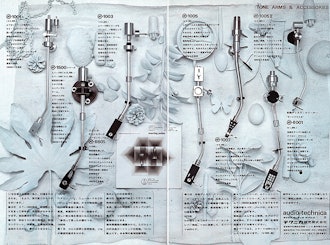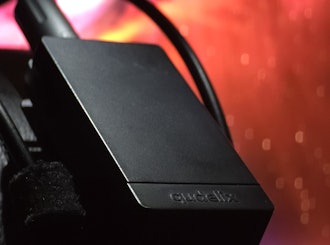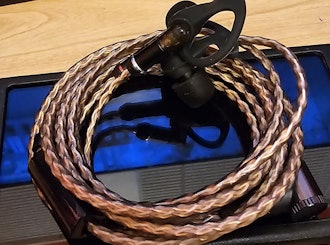Click to view our Accessibility Statement or contact us with accessibility-related questions










Showing 1 of 12 conversations about:

nwimpney
219
May 15, 2018
bookmark_border
Related Posts

storyboardtech
Finding your groove: getting into vinyl with Audio-Technica
I’d like to think that I could’ve been friends with the late Hideo Matsushita, founder of Japanese Hi-Fi powerhouse Audio-Technica. If I could, I’d travel back in time to 1960’s Tokyo, where a young Matsushita curated “vinyl listening sessions” at the Bridgestone Museum of Arts, exposing visitors to the sounds and possibilities of high end audio and the warmth of vinyl records. I imagine sitting with him in a mod coffee shop, listening to the stories of what he witnessed in those sessions, the conversations he had with visitors, and what ultimately motivated him to head back to his small apartment above a ramen restaurant and start an audio company of his own. In the histories I’ve read regarding AT’s humble beginnings, Matsushita’s motives seem clear. Produce high end audio at affordable prices, bringing audio excellence into spaces and to customers that simply didn’t have access to it before. His first two products, the AT-1 and AT-3 phono cartridges did exactly that, and...
Dec 6, 2023

MrChiSox
Big changes coming to my tiny little music room, I've recently purchased a new stack. Currently figuring out where to locate it all and ordering up the necessary cables, it won't be too long before I'm up and running. I am now the proud owner of a brand new stack. It's a European brand called Earmen. Amp, DAC, Streamer & Linear Power Supply. It won't be long!
https://www.youtube.com/watch?v=MB15yM4UptQ
Apr 23, 2024

dantso
do the inputs (rca, tos, bt, usb, etc) sum/mix or is that a selector switch in the front? might be nice if they just mix...
Apr 22, 2024
Trending Posts in Audiophile
itsamepe
Sennheiser PC37X randomly goes bad after disconnecting the cable ?
Greetings, Yesterday I was using my headset like normal with my macbook, just listening to music and on a call with people like usual, and the headset was perfectly fine. The stock wire that came with the headset is extremely long and yesterday it annoyed me very much that it kept getting tangled with itself, so I decided to see if the cable is replaceable. I pulled out the cable from the headset and saw the adapter, and looked online for a replacement. Upon plugging it back in, the audio sounded extremely muffled and washed out. Im not sure what I did wrong to make it mess up like that as I've always taken good care of it, ive had it for about 2 years and its always just been chilling on my desk, but anywho I thought the cable just went bad and ordered a replacement. The replacement came, and the issue is still persistant, so I am not sure what the issue is I've tried multiple different headsets and the issue is not with the port, and I also tried it with my windows laptop and...
Apr 23, 2024

MrChiSox
Big changes coming to my tiny little music room, I've recently purchased a new stack. Currently figuring out where to locate it all and ordering up the necessary cables, it won't be too long before I'm up and running. I am now the proud owner of a brand new stack. It's a European brand called Earmen. Amp, DAC, Streamer & Linear Power Supply. It won't be long!
https://www.youtube.com/watch?v=MB15yM4UptQ
Apr 23, 2024

Briankan
Recommendation for my next headphone set? I have Koss 95x
Hey all, What would you recommend I get next and why? I have Koss ESP-95x electrostatic massdrop headphones. These are my first and only audiophile set. I love them. I think my only real requirements is $500 or less for the headphones and that they have a little more low end. I don’t need thump but these are really light on lows…but the experience is still awesome. Also any recommendations on an amp? I only have my electrostatic thingy. I am using the Topping D50 DAC. thx!!
Apr 22, 2024

Simthaniel
Rigs
Modded headphones with qudelix at the core
When I received the Qudelix 5K, I had already modified a pair of Superlux HD-681 headphones. I previously soldered my own balanced connections to the drivers, providing multiple ways to connect and...
Apr 14, 2024

brothamike
A decent set of IEMs
I am in the midst of a 300 hour burn-in but, I will say I am enjoying how this set sounds so far. Before I received these which was btw late by a few weeks, I purchased a Sony/Kimber Kable MMCX...
Apr 12, 2024
merrick97
Should I exchange the PC38X for better headphones?
I bought the PC38X headphones FOR GAMING and they are great, but I have NO use for a Microphone since I don't do competitive gaming and I was wondering if there were better headphone options at a similar price without a headphone, where (presumably) more of the cost was put into making it sound better. I also find that my PC38X don't get quite as loud as I would like and I was wondering if a cheap amp like the iFi Go link would draw a little more volume out of my phones. https://www.amazon.com/dp/B0BN6MM822?psc=1&ref=ppx_yo2ov_dt_b_product_details I went with the PC38X since it was considered the best bang for buck headphones. I care most about using spatial apps like DOlby Atmos and DTS Headphone:X. Suggestions are welcome.
Apr 11, 2024

LostnAmerica
Sound Signature of the Grell Project.
Wondering what type of sound signature the Drop Grell project headphones will have or trying to attain. Any update would be appreciated.
Apr 8, 2024






IMO 320kbit lossy is just silly. If I want something max quality or for archival purposes, I'm going lossless (redbook is fine). If I just want it to sound good, and save some space so I can fit it all on my portable player, I'm fine with ogg q5 or q6, (160 or 192 ABR IIRC?) I generally keep all of my music as flac (rips from my CD collection, or ones I've purchased in lossless format), and I have an ogg copy of the entire tree, which I use on my portable player(s)
I _never_ convert lossy to lossless, or transcode lossy to another bitrate. (This sounds like hell, and wastes space)
When comparing online sources, you need to keep in mind that not all services follow my standards. I have spotify premium, and regardless of what bitrate they're feeding it to me at, there is "A LOT" of music that was clearly transcoded from trash-tier sources. Bubbly sounding under-water pre-echoes, and cymbals that sound like they're running through a chorus pedal, etc. This doesn't mean ogg q6 (or whatever spotify streams at) is bad. It means that they've transcoded low quality sources. It's like taking a high-res photo of a low res print.